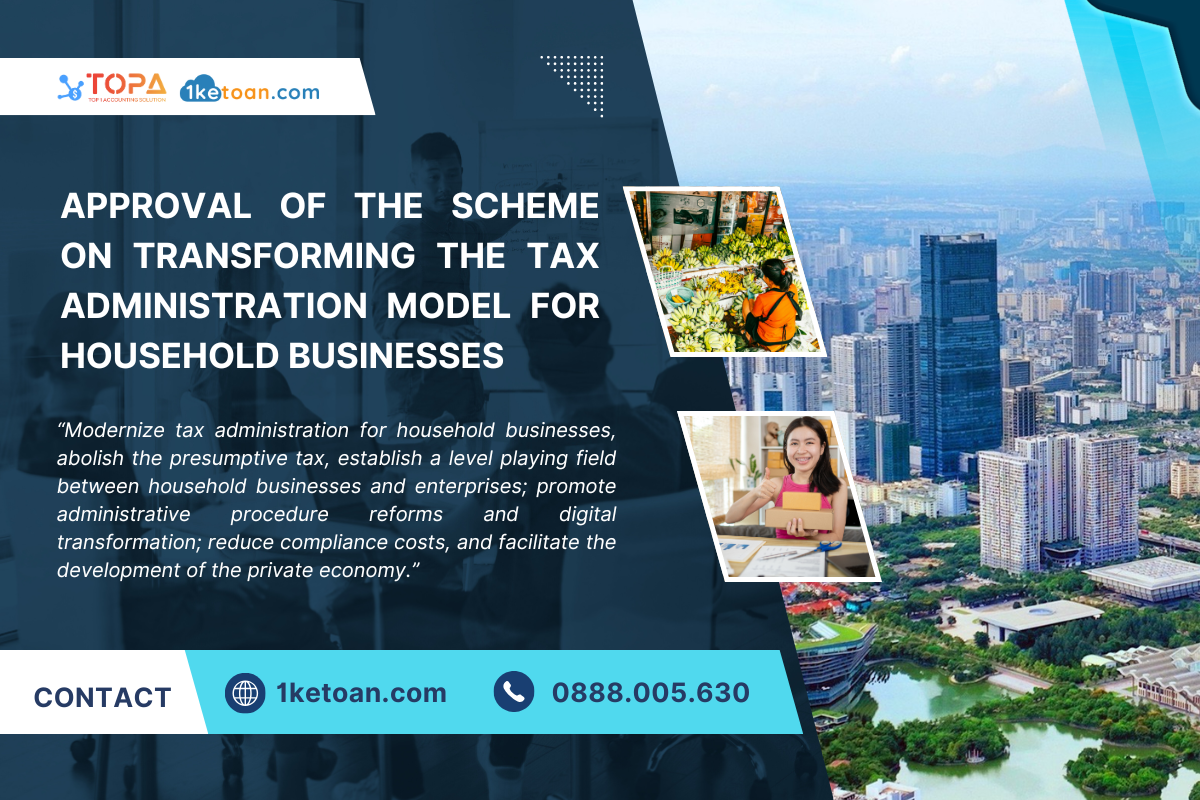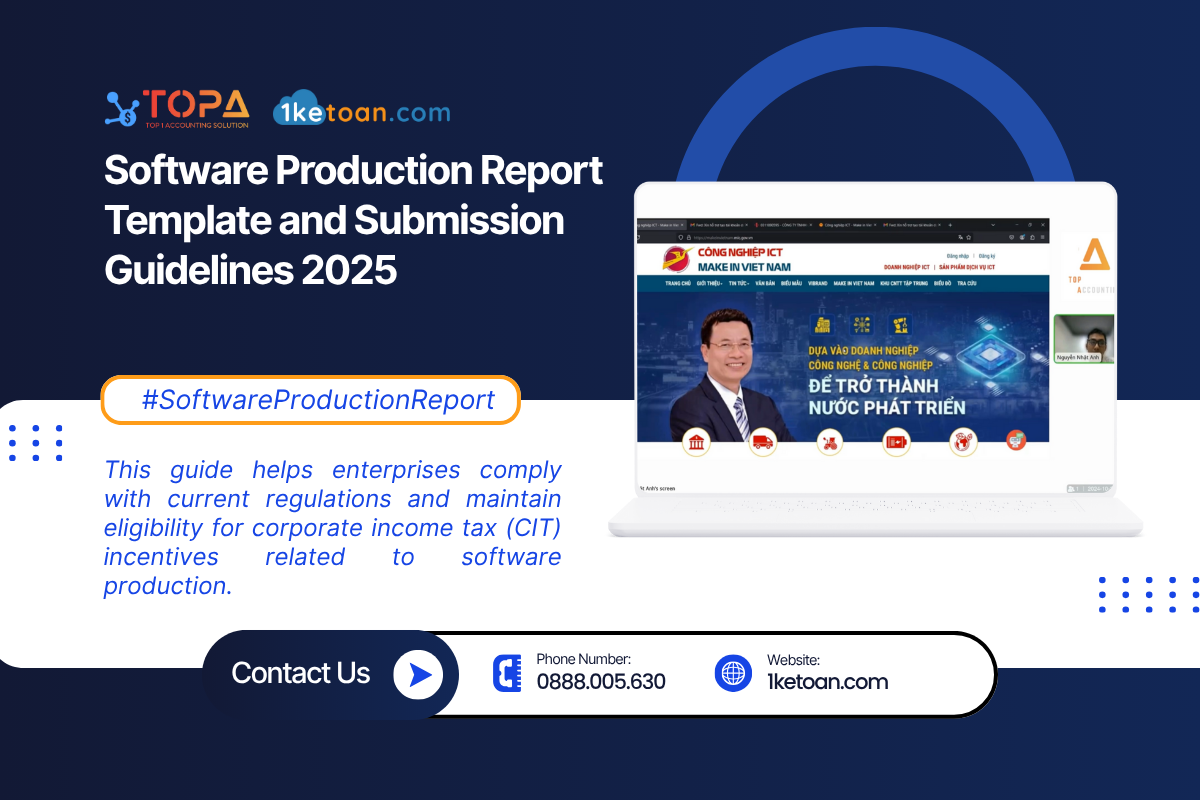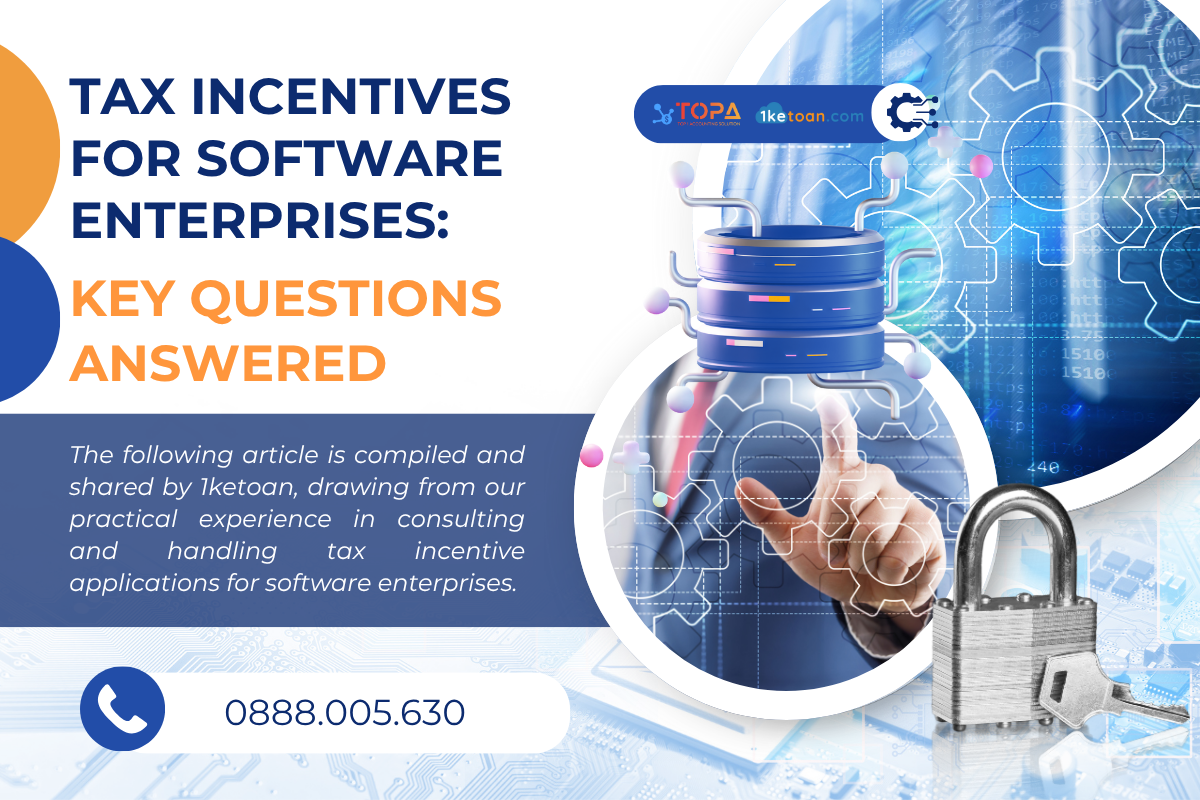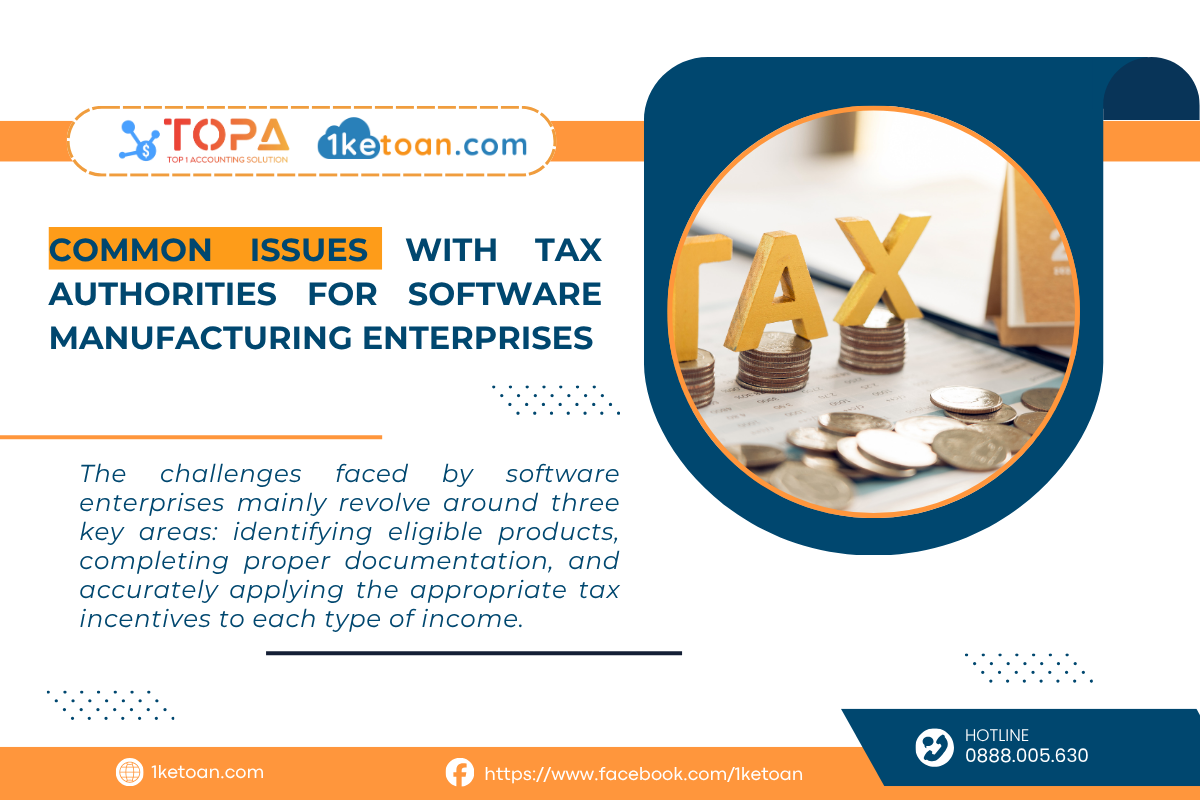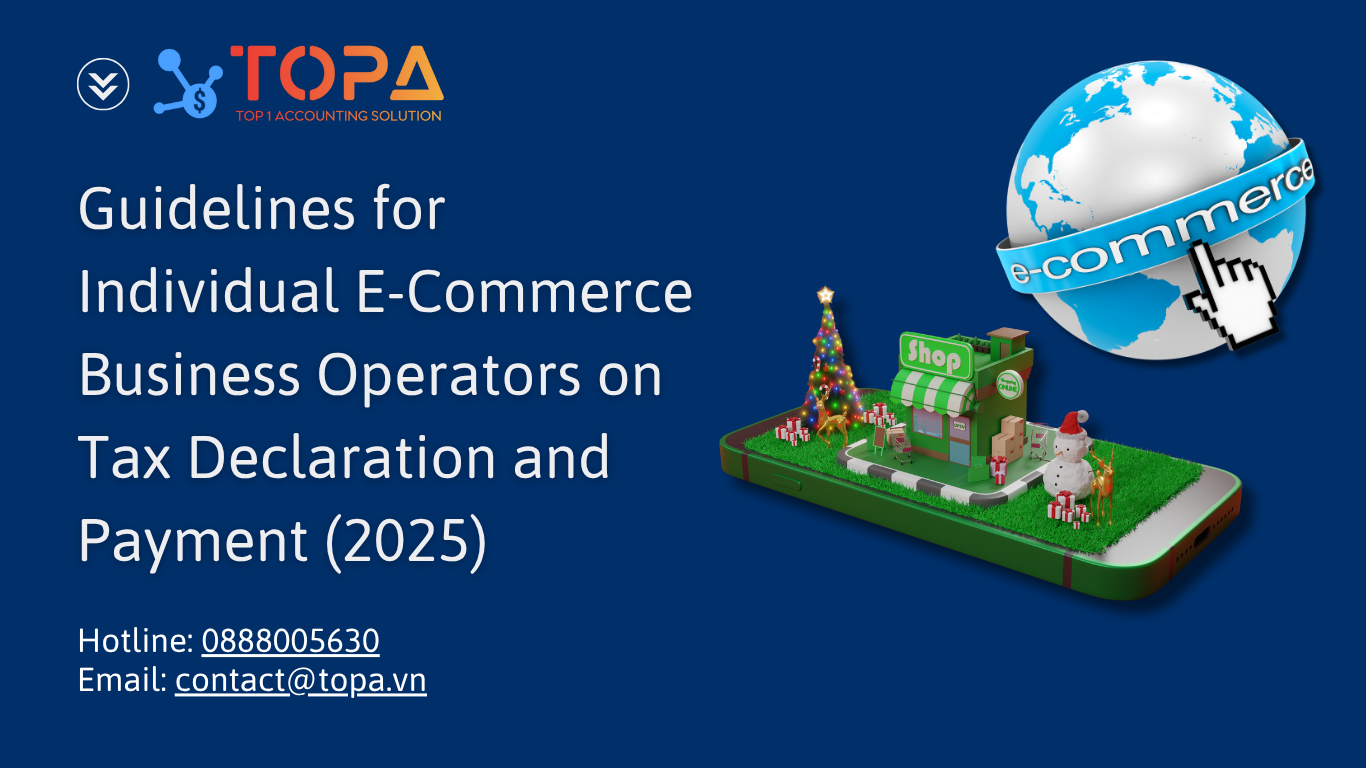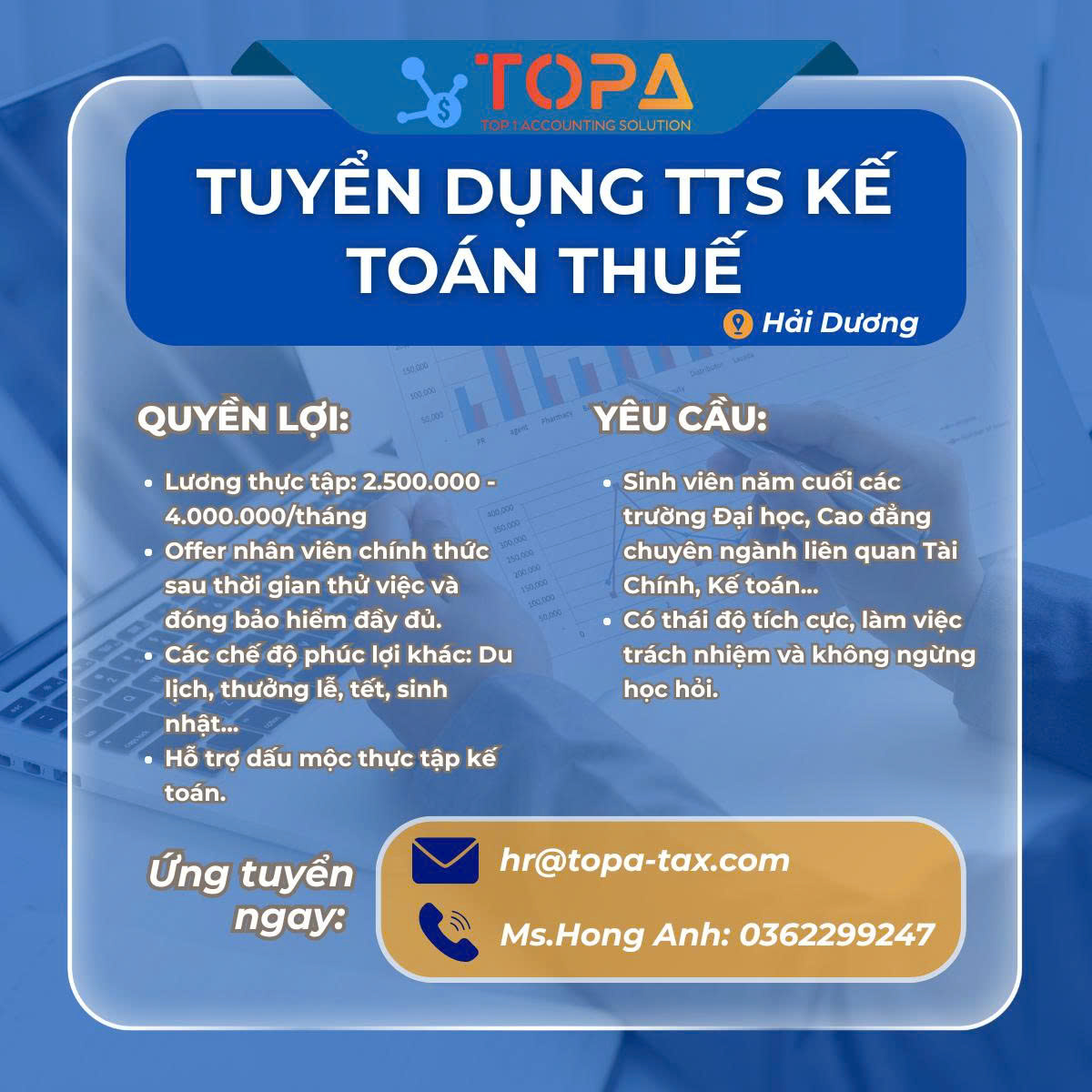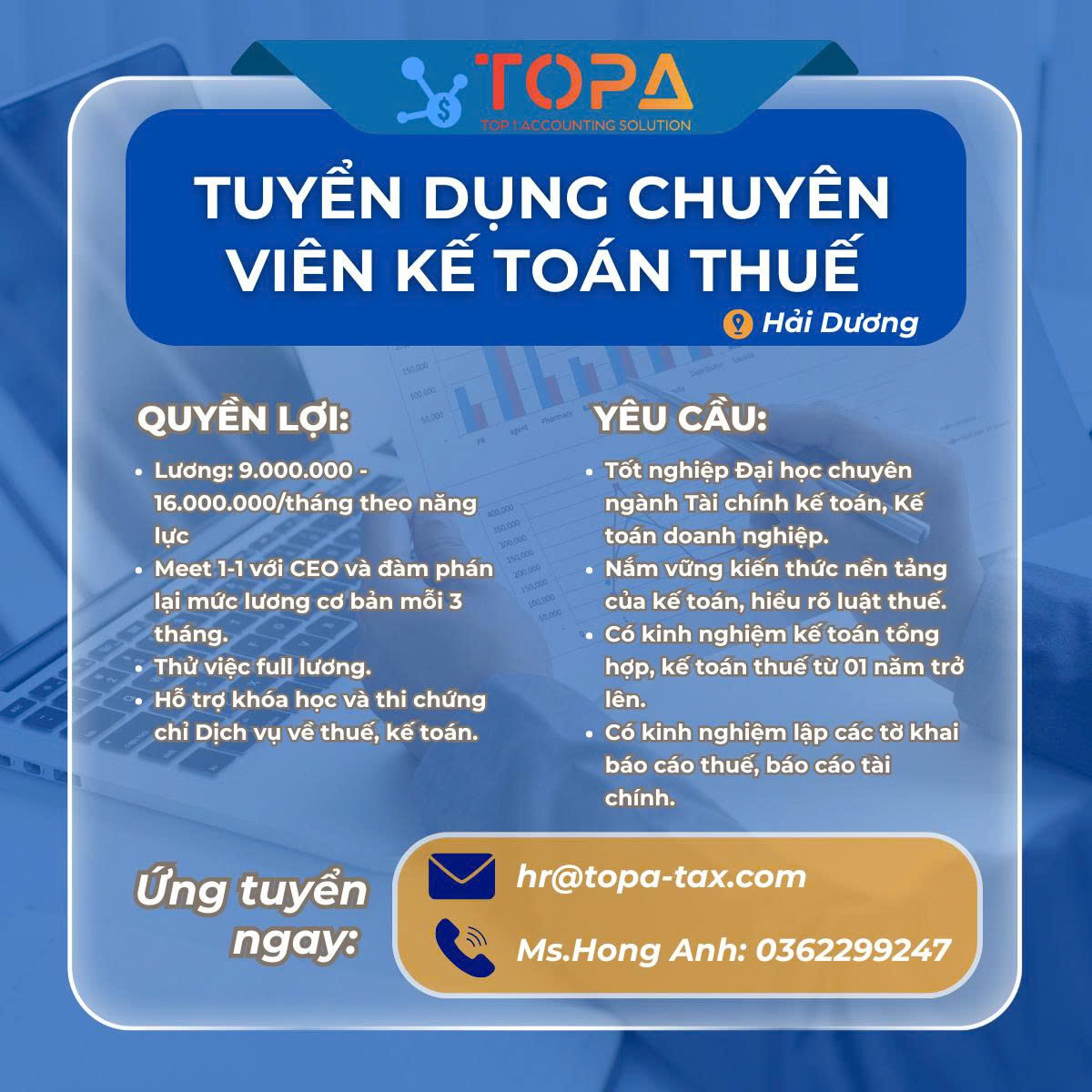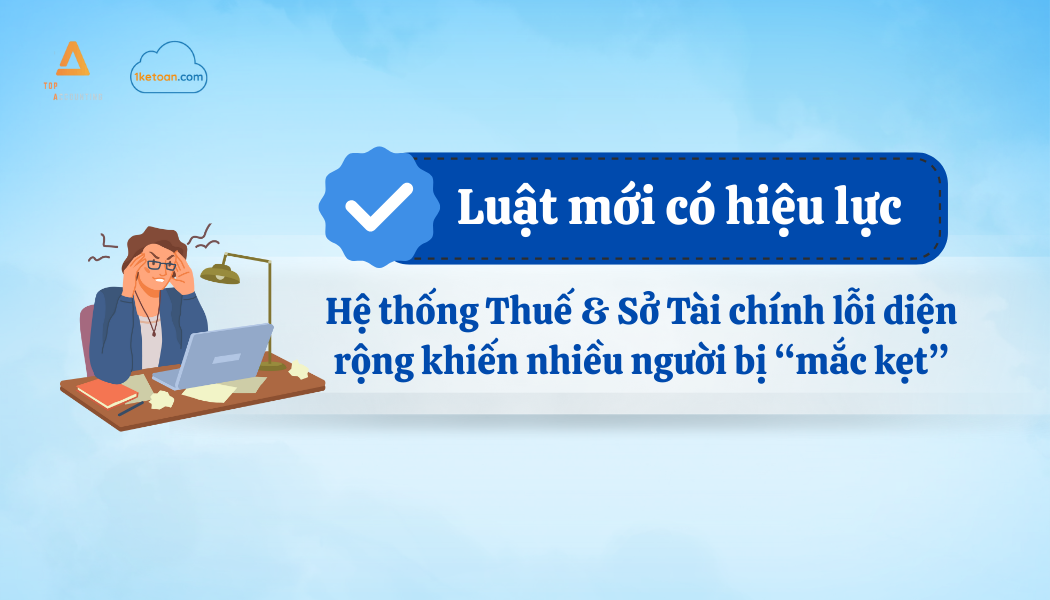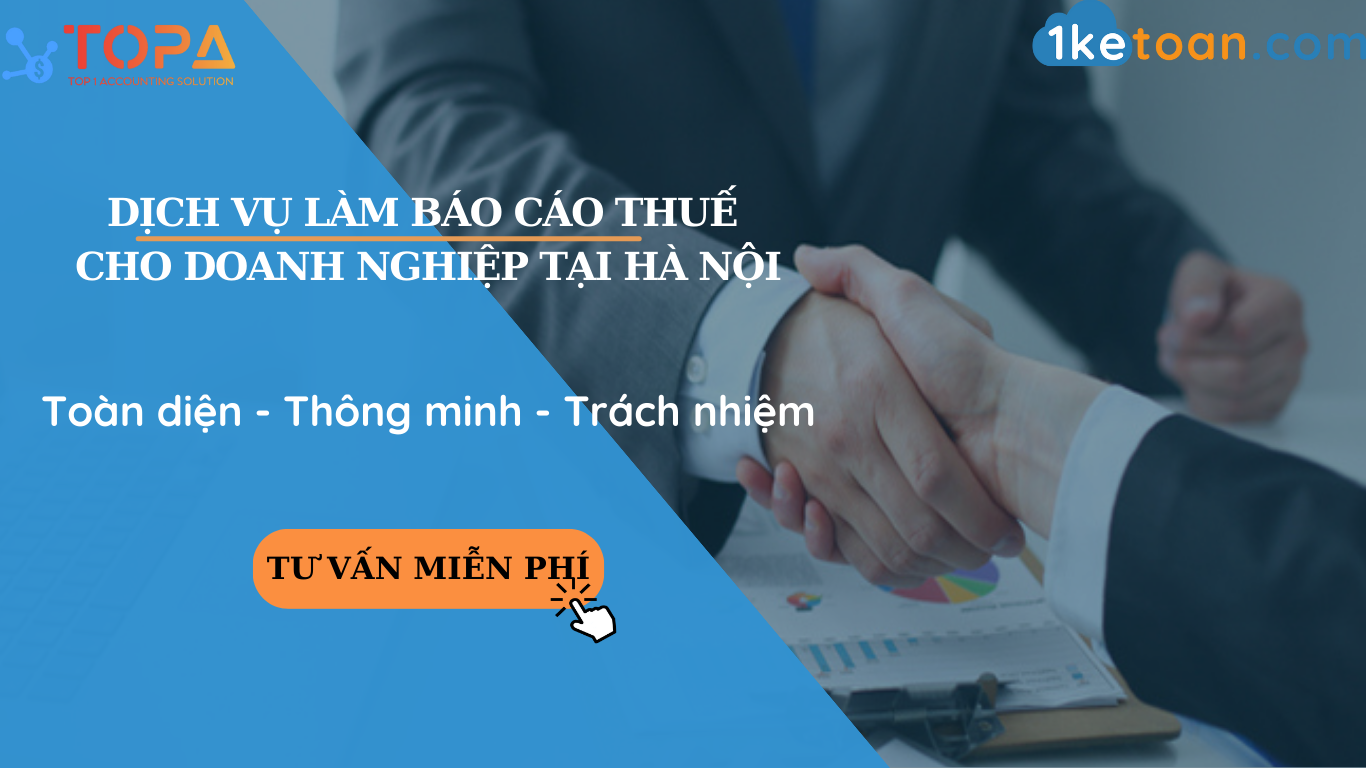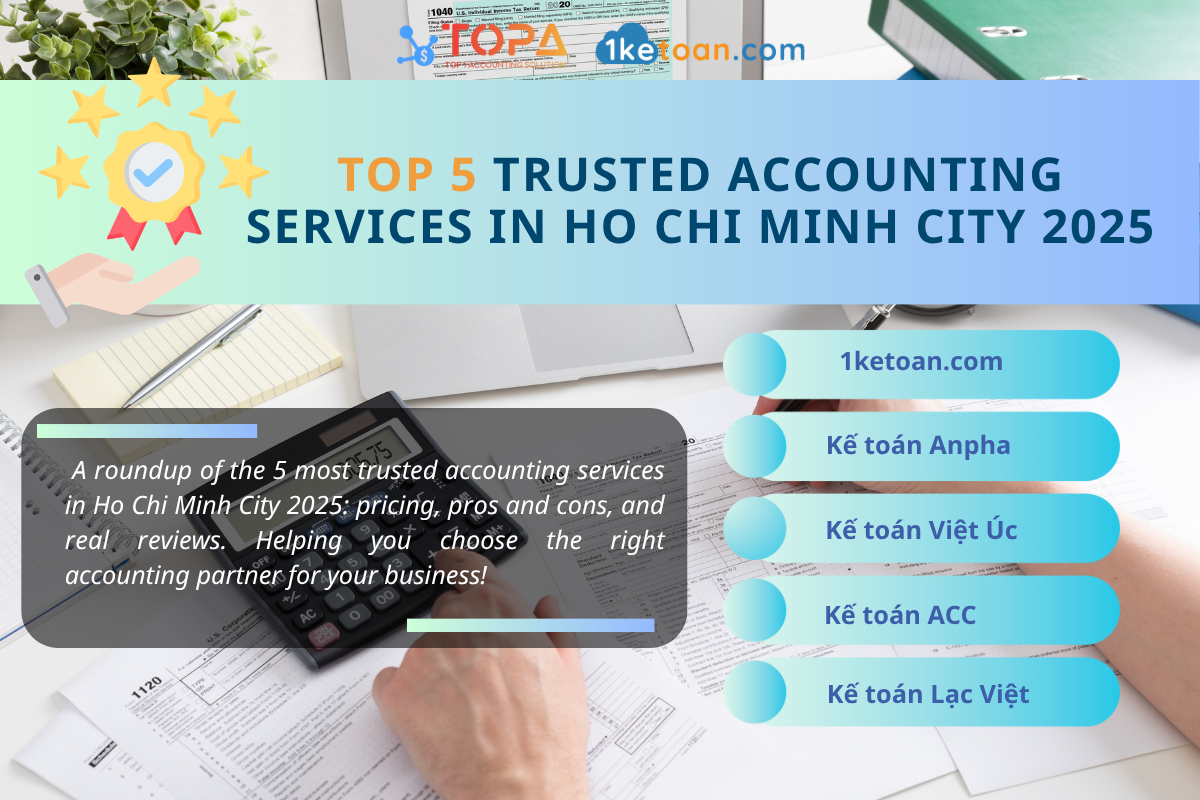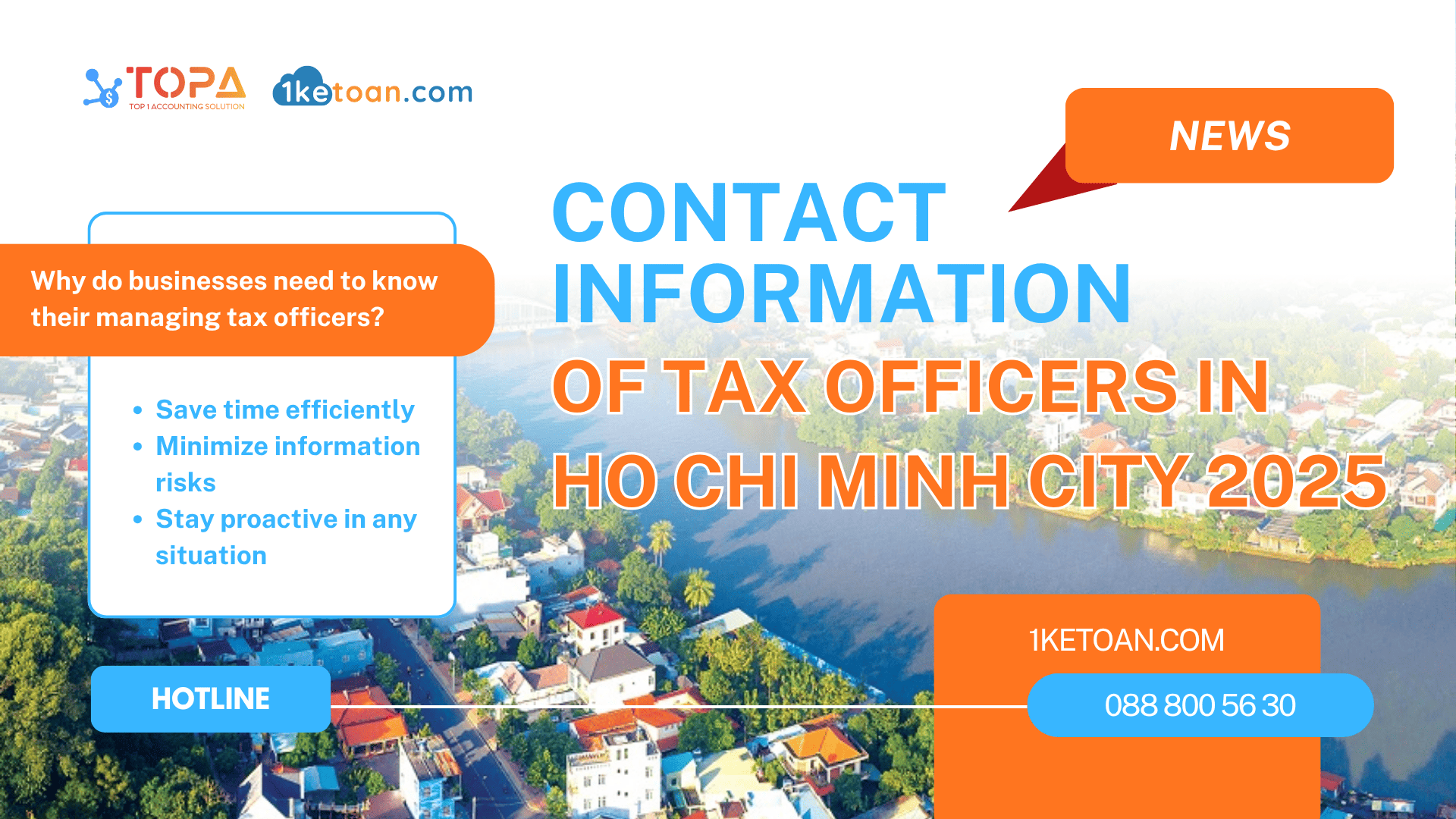Approval of the Scheme on Transforming the Tax Administration Model for Household Businesses

Nội dung
- 1 1. Context and Rationale for the Transition
- 2 2. General Objectives of the Scheme
- 3 3. Implementation Timeline and Key Directions
- 4 4. Specific Objectives by 2026
- 5 5. What Businesses and Household Businesses Need to Understand About This Change
- 6 6. Impacts on Businesses and Household Businesses
- 7 7. Tax Administration Model for Household and Individual Businesses
- 8 8. What Should Businesses Start Preparing Now?
- 9 9. Conclusion
1. Context and Rationale for the Transition
On October 6, 2025, the Ministry of Finance officially approved the Scheme titled “Transformation of the Tax Administration Model and Method for Household Businesses Following the Abolishment of Presumptive Tax” under Decision No. 3389/QĐ-BTC. This marks a significant milestone, signaling a fundamental shift in the tax administration approach for millions of household businesses nationwide.
For many years, the presumptive tax regime has helped thousands of small household businesses reduce administrative burdens and simplify tax obligations. However, practical implementation has shown that this mechanism is no longer aligned with the pace of current economic development.
Specifically:
- Actual revenue is difficult to determine, leading to tax losses and inequities among household businesses. Some well-structured businesses still had to pay a fixed presumptive amount, while others with similar revenue levels found it easier to “avoid” taxes.
- The application of technology and digital transformation in tax administration remains limited, making monitoring and data transparency challenging.
- The tax burden gap between household businesses and small enterprises has widened, creating an uneven business environment that affects competition and sustainable growth.
Given these limitations, transitioning from presumptive tax to a self-assessment and self-payment model is not only an inevitable requirement but also an opportunity for the tax sector to enhance transparency, fairness, and modernization. At the same time, it enables household businesses to gradually align with the modern tax administration standards applied to enterprises.
2. General Objectives of the Scheme
According to Decision 3389/QĐ-BTC, the Scheme aims to:
“Modernize tax administration for household businesses, abolish the presumptive tax regime, establish a level playing field between household businesses and enterprises; accelerate administrative reform and digital transformation; reduce compliance costs; and facilitate the development of the private economy.”
In other words, this Scheme does not merely change tax calculation and administration methods—it seeks to upgrade the entire tax management ecosystem toward digitalization and taxpayer-centric processes.
3. Implementation Timeline and Key Directions
According to the roadmap, starting from January 1, 2026, the presumptive tax regime will be officially abolished. All household businesses will shift to a self-assessment and self-payment mechanism, similar to small and medium-sized enterprises.
To ensure effective implementation, the Ministry of Finance has set out four key directions:
- Comprehensive transition from presumptive tax to a declaration-based tax model, ensuring transparency across all business activities.
- Simplify administrative procedures and reduce compliance costs by at least 30%, allowing household businesses to focus on business growth instead of tax paperwork.
- Accelerate digital transformation, bringing 100% of household business tax procedures online—from filing and payment to information lookup.
- Create a fair competitive environment, encouraging household businesses to develop transparently and sustainably while improving credibility and competitiveness.
This means household businesses are entering a new era of modern tax administration—backed by transparent data, digital support tools, and a more equitable competitive landscape.
4. Specific Objectives by 2026
As noted, from January 1, 2026, the presumptive tax regime will be officially abolished—marking a crucial transition from an assessed tax mechanism to a self-assessment and self-payment system. This is not merely a procedural change but a cultural shift in tax administration, moving from “estimate-based management” to “data-driven management.”
The Ministry of Finance has defined four key pillars:
- Comprehensive transformation of the tax model: All household businesses will declare their actual revenue, expenses, and taxable income, reducing tax losses and ensuring a fair competitive environment with enterprises.
- Administrative simplification: At least 30% of procedures and compliance costs will be reduced, allowing household businesses to focus on operations instead of paperwork.
- Accelerated digital transformation: 100% of tax filing, payment, and information lookup will be performed via the electronic tax portal, ensuring transparency and convenience for taxpayers.
- Encouraging transparency and sustainable development: A fair tax environment helps household businesses strengthen credibility, scale up operations, and be better prepared for integration into a modern economy.
These directions are not only mandatory requirements but also a golden opportunity for household businesses to upgrade their management practices, adopt digital tools, and build a foundation for long-term growth.
5. What Businesses and Household Businesses Need to Understand About This Change
5.1. Tax Filing and Payment Obligations
From 2026 onward, household businesses will self-declare and self-pay their taxes on a periodic basis, instead of having tax authorities determine a fixed presumptive amount.
All declarations will be carried out entirely online through the electronic tax portal, similar to enterprises.
5.2. Books and Supporting Documents
Household businesses will be required to maintain accounting books and keep invoices and receipts for revenue and expenses to determine their taxable income.
Accounting regulations—such as Circular 88/2021/TT-BTC and Circular 132/2018/TT-BTC—will be amended and supplemented to simplify bookkeeping and reporting procedures.
5.3. Electronic Invoices
According to the roadmap, all household businesses must use e-invoices generated from POS systems, ensuring revenue transparency and facilitating tax administration.
This is a critical step toward enabling tax authorities to manage taxes based on real transaction data rather than estimates or presumptive figures.
6. Impacts on Businesses and Household Businesses
The transition from presumptive taxation to a self-assessment system presents both challenges and opportunities:
6.1. For Household Businesses
- Greater financial transparency: Household businesses can clearly demonstrate revenue, expenses, and taxable income.
- Easier access to financing and expansion opportunities: Transparent data enables banks and partners to more accurately assess financial capacity.
- Reduced risk of penalties: With detailed guidance and digital support tools, errors in tax filing and payment are minimized.
- Enhanced credibility and competitiveness: Household businesses gain a status comparable to small enterprises, opening up opportunities for collaboration and sustainable development.
6.2. For Small and Medium-sized Enterprises (SMEs)
- A fairer playing field: With the end of presumptive tax benefits, competition becomes more transparent.
- Reduced incentive for tax evasion through business structure changes: The market becomes more stable, equitable, and trustworthy.
6.3. For Regulatory Authorities
- Higher efficiency and better prevention of tax losses: Digital data helps tax authorities accurately monitor revenue and tax obligations.
- Reduced administrative burden: Human resources can focus on data analysis and post-audit work instead of manual procedures.
Overall, the transformation of the tax model is an opportunity to upgrade the tax administration system while fostering a transparent and professional business environment for both household businesses and enterprises.
7. Tax Administration Model for Household and Individual Businesses
TABLE: TAX ADMINISTRATION MODEL FOR HOUSEHOLD AND INDIVIDUAL BUSINESSES
| Criteria | Group 1: Revenue ≤ VND 200 million | Group 2: VND 200 million < Revenue ≤ VND 3 billion | Group 3: Revenue > VND 3 billion |
| VAT | Not required to pay VAT | – Calculated under the direct method (% on revenue) VAT payable = Revenue × % rate – Voluntary registration for credit method if eligible VAT payable = Output VAT – Deductible Input VAT | – Mandatory credit method VAT payable = Output VAT – Deductible Input VAT |
| Personal Income Tax (PIT) | Not required to pay PIT | Calculated as a % of revenue based on business line PIT payable = Revenue × % rate | Calculated at 17% on taxable income (Taxable income = Revenue – allowable expenses) |
| Revenue declaration responsibility | Declare 2 times/year (beginning/mid-year and end of year) to determine tax obligations | Quarterly declarations (4 times/year) + annual finalization | Monthly declarations (if annual revenue > VND 50 billion) or quarterly; annual finalization |
| Invoices | Encouraged to use e-invoices with tax authority code (for B2C transactions) | Mandatory e-invoices generated from POS systems if revenue > VND 1 billion and selling goods/services directly to consumers | Mandatory e-invoices with tax authority code OR e-invoices generated from POS systems |
| Accounting books | Simple bookkeeping (free basic accounting software provided) | Simple accounting books, free software | Must comply with accounting regime for micro or small enterprises |
| Bank account | Not required | Must open a separate business bank account | Must open a separate business bank account |
| Change of tax calculation method | Not applicable | If revenue > VND 3 billion for 2 consecutive years → apply Group 3 rules from the following year | Treated as an enterprise; eligible for VAT input credit from the first tax period |
| E-commerce business | If the platform has a payment function: – Platform withholds, declares, and pays VAT & PIT based on % of revenue – If annual revenue < VND 200 million → eligible for refund of overpaid tax withheld by platform If the platform has no payment function: – Individuals must self-declare and pay tax per transaction, monthly or quarterly | Same as Group 1 | Same as Group 1 |
| Government support | – Free accounting software – Support for e-invoice usage – Legal consulting | – Free accounting software – Support for e-invoice usage – Legal consulting | – Free accounting software – Support for e-invoice usage – Legal consulting – Encouragement to convert into an enterprise to enjoy incentives under Resolutions 68 & 198 |
8. What Should Businesses Start Preparing Now?
- Review the business model and assess actual revenue to prepare for the upcoming transition.
- Train staff on e-invoicing, tax declaration, and document storage in compliance with new regulations.
- Update accounting software to ensure compatibility with the electronic tax system.
- Follow detailed instructions issued by the Ministry of Finance and local tax authorities.
Preparing early will help household businesses transition smoothly and avoid risks once the new regulations take effect.
9. Conclusion
The proposal “Reforming the Tax Administration Model for Household Businesses in the Post–Fixed Tax Regime” is not merely a shift in tax management — it marks a significant transformation in how household businesses operate, record revenue, and comply with legal obligations in a new era.
Starting in 2026, when household businesses officially move to the self-declaration – self-payment model, many will feel increased pressure:
- Bookkeeping must be clearer.
- Revenue must be more transparent.
- Invoices, documents, and tax obligations must be fully compliant.
What was once “simple and familiar” will now become more complex — and this is a genuine concern for many household business owners:
- Am I doing it correctly?
- Will I be fined or face tax recovery?
- How can I control costs under the new model?
Yet within these challenges lie real opportunities:
- Transparent operations make it easier to access loans and expand the business.
- Better financial management reduces tax risks and avoids costly mistakes.
- Standardizing processes can actually lower operating costs — not increase them, as many fear.
Most importantly, you do not have to shoulder everything alone.
Transitioning to the new tax model does not mean you must spend more — in fact, with proper preparation, you may even save money compared to manual work, errors, or future penalties.
This is why many household businesses are turning to professional service providers like 1ketoan.com, which offer:
- Setup and management of e-invoices
- Transparent bookkeeping at a low cost
- Support with tax declarations and payments
- Consulting to optimize revenue, expenses, and tax obligations
All with the goal of helping every household business adapt safely, avoid disruptions from new policies, and operate as efficiently and cost-effectively as possible.
Transition is never easy — but you do not have to walk it alone.
With the right preparation, this can become a pivotal moment that helps household businesses grow more sustainably, professionally, and confidently in the years ahead.
Từ 2026 bỏ thuế khoán, hộ Kinh doanh chuyển sang kê khai như thế nào?
Toàn cảnh nghĩa vụ thuế của Hộ Kinh doanh năm 2025

